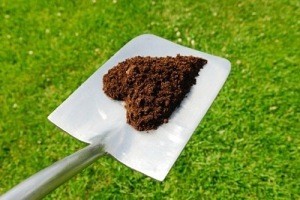 One way to save time while maximizing gardening results is use organic mulches. As they decompose, they add organic matter and small amounts of nutrients back into your soil, while providing all of the other benefits of mulch. Not only that, but the beneficial organisms in decomposed mulch also help control diseases that originate in the soil.
One way to save time while maximizing gardening results is use organic mulches. As they decompose, they add organic matter and small amounts of nutrients back into your soil, while providing all of the other benefits of mulch. Not only that, but the beneficial organisms in decomposed mulch also help control diseases that originate in the soil.
Faster: Organic mulches that are high in nitrogen (usually green, fresh, and not too woody) tend to decompose the fastest. Because they return nutrients to the soil, they work well in annual flower and vegetable beds. Examples of organic mulches that decompose quickly include grass clippings and compost.
Slower: These organic mulches tend to be dry, woody, and high in carbon. Examples include bark (which is naturally rot-resistant), newspaper, and cardboard. Use them to suppress weeds between rows, on pathways, and under perennial shrubs, where they won't interfere with annual planting.
Cocoa shells: Cocoa shells are higher in nitrogen than wood-based mulches. Apply a layer at least 2 inches deep and water lightly to secure them in place. Warning: Cocoa shells contain two ingredients, theobromine and caffeine, that can be highly toxic when ingested by animals - especially dogs. Because animals are tempted their sweet, chocolate scent, it's best not to use this mulch if you have pets.
Chopped leaves: Leaves are best used when they have bee chopped or composted for several months or turned into leaf mold. Apply 3-inch layers around plants for a good short-term mulch.
Compost: Compost is the most fertile organic mulch of all! Spread 1 or more inches as a topdressing around annual and perennial plants or along rows in the vegetable garden.
Grass clippings: Grass clippings are effective when 1-4 inches is applied around (not touching) plants. This organic mulch is very high in nitrogen and works great in the vegetable garden. Just be sure not to use clippings that have been sprayed with herbicides.
Newspaper and cardboard: As mulches, newspaper and cardboard are high in carbon. That means that while they do improve soil texture as they decompose, they don't add much to the soil in the way of nutrients. Lay down overlapping sections of newspaper or cardboard and anchor with soil or stones, or shred paper and apply 4-6 inch layers around plants. Do not use colored newspaper unless you know the inks are soy-based and non-toxic.
Pine straw (needles): Pine straw makes a great mulch because it's both attractive and it stays in place regardless of wind and rain. Apply in 2-4 inch layers around plants. Pine straw has a very minimal effect on the pH level of soil, so you may want to be careful using it around non-acid loving plants.
Shredded bark chips: Wood chips are best used after being composted, but you can also purchase them from garden centers, or get them from a local tree service. Don't use dyed chips around edibles. Apply a 2-4 inch layer around established planting of trees or perennials. Wood chips can tie up nitrogen in soil as it decomposes, so give young plants a boost of high-nitrogen fertilizer before applying.
Straw and hay: Straw is one of the best organic mulches for retaining soil moisture and keeping down weeds. Lay 6-inch layers around plants and mulch heavily between rows to keep weeds at bay. Note: Straw and hay may contain seeds that produce weeds.
I'm glad you've added pine straw to your list of mulches. Other benefits of pine straw are that is is relatively inexpensive, it is long lasting and keeps a neat appearance.
Pine straw allows water and a certain amount of sunlight through while still acting as an insulating material. Mulches that lie 'flat' do not offer much, if any, insulating properties.
Dried, cured pine straw is only very slightly acidic. It does not change the ph of the soil on which it is used. It can be used safely around plants requiring a neutral or slightly alkaline soil. It does not leach any acidifying agents into the soil.